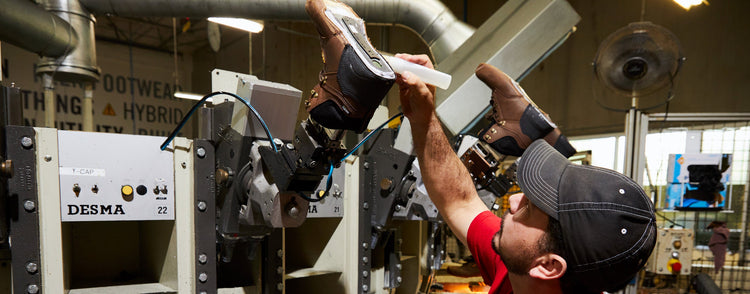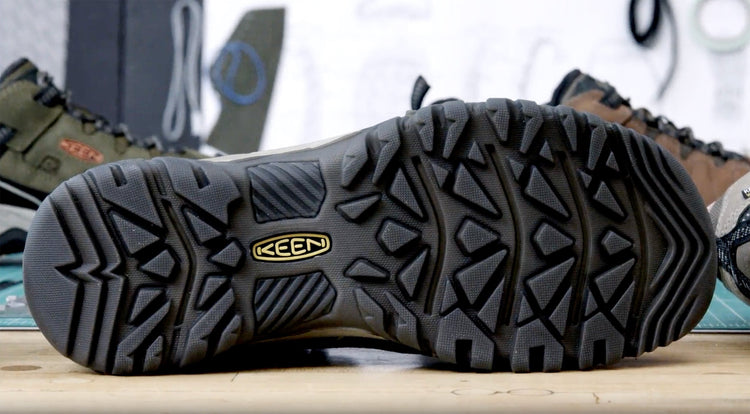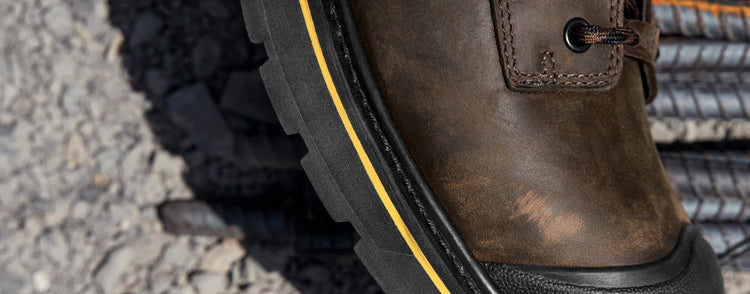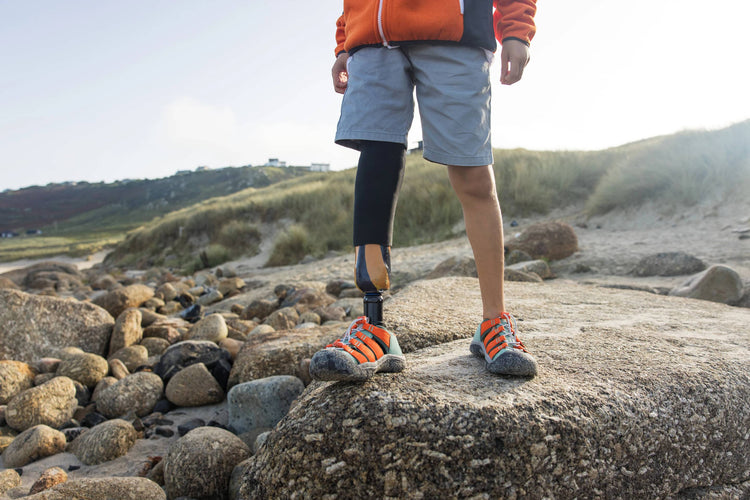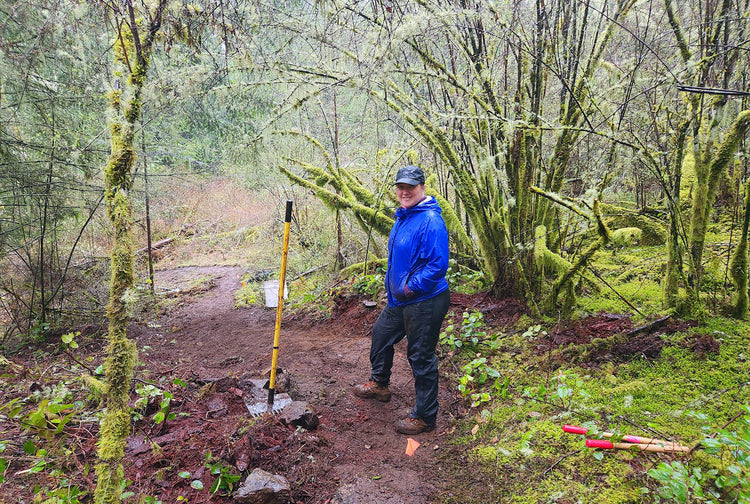At KEEN Utility, we’re laser-focused on making the best work footwear possible. It may sound cliché, but it’s true: feet are your foundation, and protecting them from workplace hazards is a top priority.
As a matter of fact, jobsite foot protection is so important that work footwear is regulated to maximize safety. ASTM provides the main regulation, but you’ll also see terms like ANSI, SATRA, and Mark II. Explore what these national standards mean, and learn how our products are designed to meet or exceed them.
If you’ve ever purchased a pair of KEEN Utility work boots or shoes, you’ve probably seen something like this under product details:

These codes represent safety testing standards met by a particular KEEN Utility work boot or shoe (in this case, the men’s Independence 6” waterproof work boot). If it reads like a foreign language, that’s okay. We’re going to explain what those numbers and letters stand for, what they mean, and why they’re important for workplace safety.
What are the ASTM and ANSI?
When you look at a shoe or boot’s safety features on our site, you’ll see ASTM, which stands for the American Society for Testing and Materials. Another acronym you might have seen around is ANSI, the American National Standards Institute. How are these two organizations related, and what do they have to do with KEEN Utility work footwear? Great questions.
Let’s start with ASTM, a nonprofit organization with a hands-on role in creating product standards and testing standards. Does the ASTM actually perform the safety tests? No. The ASTM devises the test and sets the standards, but if a company like KEEN Utility wants the Certification of Compliance (CoC) from the ASTM, it has to get it from a third-party lab. These labs use tools like the SATRA machine to actually do the testing. More on that in a sec.
Once the standards are developed, a second organization—ANSI—accredits them. Like the ASTM, ANSI is a private nonprofit that provides guidance on the development of workplace safety standards (including things like safety footwear). In essence, it’s an umbrella organization that works with numerous industries, government policymakers, and other orgs (like the ASTM) that actually test and set safety standards.
Keep in mind that these standards are voluntary, meaning businesses don’t have to adopt them (unless they become OSHA laws, but that’s another story).
KEEN Utility Safety Designations
Now that we have an understanding of ASTM and ANSI, let’s break down what all those numbers mean. Using the men’s Independence 6” boot as an example, you’ll see the following safety designation:
“Meets ASTM F3445-21 and F2413-18 M I/75 C/75 EH Standards”
F3445 is the standard’s identifying mark, and -21 indicates the year. This standard is an update to an earlier F2413-18 standard, which covered safety footwear with either hard toe caps or soft toe caps but didn’t cover slip resistance when it was first adopted, hence the updated 2021 standard.
• M / F signifies gender.
• I/75 C/75 means an impact resistance of 75 foot-pounds (a foot-pound is an energy unit equal to the energy needed to lift one pound one foot in distance) as well as compressive loads up to 2,500 pounds (that is, up to 2,500 pounds resting on your toe).
• EH is the boot’s Electrical Hazard rating, meaning its ability to reduce the risk of electric shock if it comes into contact with live circuits.
• ESD (or SD in Canada) designation means the ability to reduce excess static electricity while maintaining electrical hazard protection.
Interesting fact: In order for a boot outsole to receive an Electrical Hazard rating, it must be able to withstand up to 18,000 volts at 60 Hz for one minute.
Three other safety designations that factor heavily in our safety footwear are:
• ASTM SATRA TM31
• ASTM D471-06 903#
• Mark II - F1677-96
ASTM SATRA TM31 is a testing method that determines a material’s abrasion resistance. You can read a more technical description here, but basically it’s done by rubbing an abrasive material under constant force against the material being tested. Many KEEN Utility work footwear, including the men’s Cincinnati 6” waterproof 90-degree heel boot and the men’s Arvada work sneaker, meet this standard.
ASTM D471-06 903# is a safety test designed to check how well rubber and rubber-like materials resist the effects of oils and isooctane chemicals, aka chemical solvents. As you now know, D471 is the test’s alphanumeric code, and -06 is the year the test was put into practice. 903# (you’ll also see it as IRM 903) refers to the type of test oil used. You’ll find this safety designation on KEEN Utility models such as the women’s Arvada work sneaker, the men’s Lansing Chelsea steel-toed boot, and our men’s CSA Camden 6” waterproof boot, just to name a few.
Extra credit! CSA stands for Canadian Standards Association.
Mark II designation verifies a material’s slip resistance. Standardized in 1996, Mark II refers to a particular test, the Brungraber Mark II. The test determines slip resistance based on friction between the material being tested and the testing surface. Developed in the 1970s, the Mark II test uses a small square of the material (like a rubber compound for the outsole). It’s a fairly simple device that determines the point at which a material slips. When the material finally slips, the data is recorded and becomes what’s called the coefficient of friction (COF)—a fancy term for horizontal force divided by vertical force. Basically, the higher the COF, the more slip resistance a boot or shoe has.
KEEN Utility styles that meet this safety requirement include the men’s Atlanta Cool II and the women’s Flint II work shoe.

The Importance of Fit
We can’t talk about safety without mentioning fit. If a work boot or shoe doesn’t fit right, it can raise the chances of on-the-job injuries to feet, legs, and more. In a very real sense, safety begins with fit.
KEEN Utility boots have a wide forefoot area that allows your toes the room to flex and move around naturally. They’re designed to be asymmetrical, so the toe shape matches your left and right foot respectively. Around the heel, the fit is snug and secure. This gives you a solid foothold when you’re working on virtually any type of surface, but especially rough, rocky, uneven ground.
The KEEN Utility fit optimizes stability, on-the-clock comfort, and ensures the boot or shoe’s safety toes are shaped to match your left and right foot respectively.

The TL;DR
Working on your feet day in and day out puts a lot of wear and tear on your footwear. At KEEN Utility, it’s our job to make sure you’re not only comfortable in your boots, but you’re also protected from potential workplace hazards. From providing non-slip traction, an Electrical Hazard (EH) rating, and impact protection to withstanding the effects of chemical solvents, KEEN Utility work footwear meets or exceeds required safety standards. ASTM reviews their standards every five years to make sure everything is up to date, and those standards may change to accommodate new jobsite needs, more accurate tests, or new hazards. Whenever the standards change, we adapt to meet them to ensure the hardworking tradespeople who wear our boots are always on good, safe footing.

